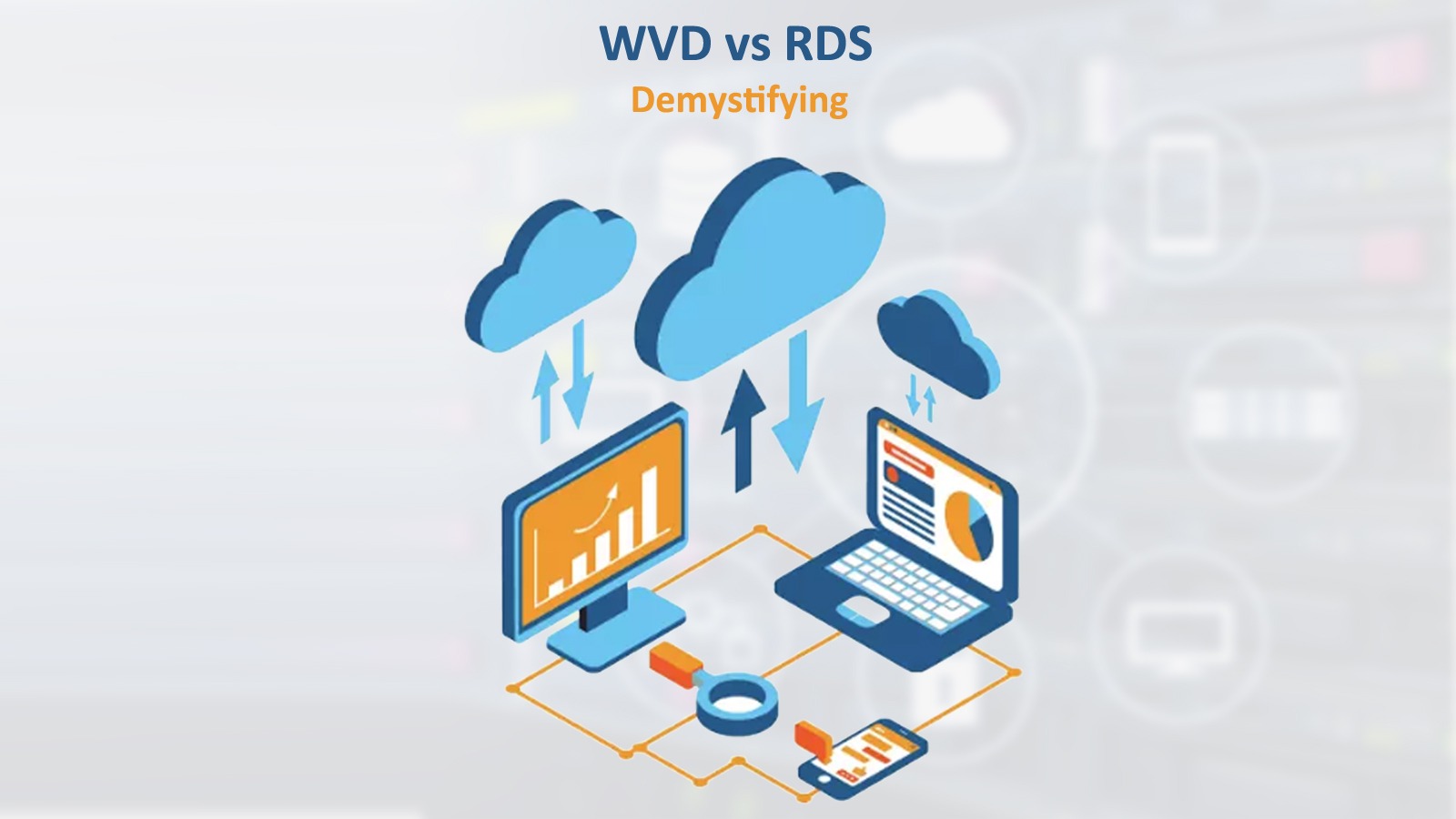
Windows Virtual Desktop vs RDS – 6 Attributes to Consider
With the roll-out of Windows Virtual Desktop (WVD) which is a hosted desktop as a service, the common question that keeps coming is the difference between Azure Remote Desktop Session Hosts (RDS) vs WVD and which one to choose. Here we will take you through the broad technicalities, how WVD relates to RDS, the benefits, cost-effectiveness and user preferences for opting one against the other.
Windows Virtual Desktop
Windows Virtual Desktop is a cloud platform service, a set of Microsoft technologies running in Microsoft Azure for virtualizing desktops and apps. WVD is not a virtual desktop that you can buy from Microsoft. Rather, it is a set of technologies used to build virtual desktops for customers and end-users.
Along with simplified virtual desktop management, WVD offers multi-session Windows 10, optimizations for Office 365 ProPlus and support for RDS environments.
Remote Desktop Services (RDS)
Remote Desktop Services (RDS) is a virtualization service where the Windows software along with the entire desktop of the computer running RDS are accessible to any remote client machine supporting Remote Desktop Protocol (RDP). Thereby providing secure, mobile and remote desktop access to users and also to run applications and desktops.
WVD vs RDS Convergences, Differences
i) The OS
The basic difference between RDS and WVD is, RDS is based on a server operating system (OS), WVD comes with a desktop OS that is, multi-user Windows 10.
WVD is both platform and infrastructure services (PaaS and Iaas). Here the host is a virtual machine (VM), and the rest of the service is PaaS. With much fewer machines to care for, WVD is an easier environment than RDS for the service providers.
RDS is a DaaS service, and the end-user choose the server type, storage, security groups, and more.
ii) The Management
In WVDs, the entire infrastructure is managed by Microsoft (Paas); whereas in RDS, the infrastructure is created and maintained by the service provider. In WVDs scenario, the operating system installation, up-gradation, patching of the OS, network configuration everything is managed by Microsoft.
Whereas, with RDS, the service providers or IT departments need to build one or more Windows Server VMs, install and configure. Boils down to additional Azure infrastructure plus expenses to support the control panel.
iii) Multi-User Windows 10
This exclusivity is available with WVDs and not on RDS, or any other cloud either. Instead of one Windows Client VM per user, WVD allows multiple-users Windows 10 on a single VM.
RDS allows users to work from a shared computer, but the OS needs to be Windows Server.
iv) Supports
WVD supports Windows Server VMs as Session Hosts.
Those who want to transform gradually to WVD this is a benefit. Because RDS Session hosts are supported in WVD. As a result, users or service providers can enjoy the WVD benefits that are not present in the RDS environment (for example, the availability of WVD infrastructure, auto-scaling, and more.
v) Resource Optimization & Load Balancing
WVD offers to scale and load balancing by way of ‘breadth’ and ‘depth’ mode. The breadth mode offers user distribution among the host pools for the best performance. The depth mode enables one server to be used first before allocating the next.
Even a combination of the two is possible at periods as per the need. All these help in cost saving.
Again, through persistent desktop (i.e. many-to-one using the same desktop), it is shared among different users where settings are not saved, resulting in space optimization. WVD also enables you to select the number of users per CPU.
vi) Windows Virtual Desktop & RDS License
So far as Client Access License (CAL) for Windows Virtual Desktop, RDS is concerned, you will not need a CAL for WVD. You can use your existing Windows E3 or Office 365 Pro Plus subscription or even an eligible Microsoft Remote Desktop Services (RDS) Client Access License (CAL).
Azure compute, storage, and networking associated with the virtual machines used are the only extra costs for WVD. You get all Office 365 features, OneDrive, Edge and Azure Marketplace.
In RDS you need to purchase everything. A Windows Server License, RDS Subscriber Access License for desktop deployment in Azure. Then you need additional VMs to run and manage.
RDS or WVD, What to Choose?
There is no fixed answer to this, as it would depend on many factors, needs, and preferences.
Users may like WVD over legacy RDS for various technical reasons:
i) WVD is the latest, newest technology
ii) profile management through FSLogix
iii) managed through PaaS
iv) supports OneDrive, indexed search in pooled desktops
Again, some service providers may opt for RDS because:
i) it is a market-tested known and proven solution
ii) some applications written for RDS on Server OS may not work in multi-session Windows 10 Enterprise at least immediately
iii) Users may prefer to retain full ownership of VMs and also the control plane or the RDS roles
iv) User settings on being changed/customized are saved/retained
v) RDS can be used both on-premise and in the Azure cloud. In contrast, WVD is an Azure only service
Apps4Rent is a Microsoft Gold partner offering managed Azure solutions. Please feel free to reach us any time 1-646-506-9354 for your requirement or queries.



